Internet@30
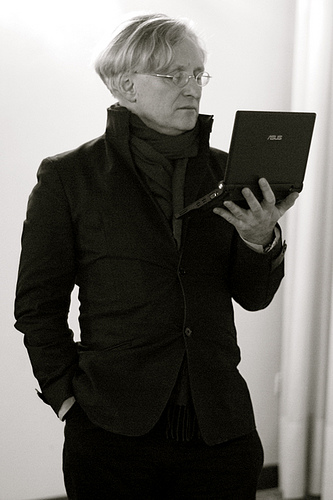

No Internet, web, google
No mobile phones

 No WiFi, Bluetooth
No WiFi, Bluetooth
No GPS
No ATMs
No digital cameras
No MP3
No LCD TVs
No DVDs, just VCR tapes
No USB sticks
Cash - post office or bank. In office hours!
Food - supermarkets closed at 18:00
Holidays and flights - travel agents
Trains - train timetable book
Hotels
Shopping
Landline Phones and phone boxes
Cinema - bars or newspapers
News and Weather - Radio, TV or newspapers
Maps
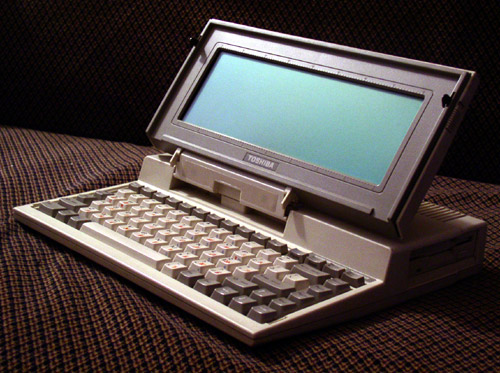 CD overtakes vinyl
CD overtakes vinyl
Home PCs beginning to arrive.
First primitive laptops, with floppies: 1.4MB
First 2½ inch hard-disks: 10MBytes

There were computer connections.
In-house: used internet protocols between computers
Externally: UUNet -- email via telephone lines
You would write the email, and mark it to be sent.
The computer would queue up mails to be sent.
Every hour, it would dial up nearby computers, and send and receive emails. The nearby computers would then be responsible for further forwarding the message to its destination.
Therefore, to send an email you had to know the route it had to take from your computer to the destination. Luckily there were 'well-known' hosts, that you could use when quoting your address.
Examples of people giving their email address:
uunet!philabs!bebop!sxm
{decvax,cernvax,unido,seismo}!mcvax!nikhefh!gert
Example of an actual address as typed:
charon!hp4nl!mcsun!sunic!uupsi!rpi! zaphod.mps.ohio-state.edu!usc!apple! bionet!agate!ucbvax!compulink.co.uk!jeremiah
Email then only used 7-bit protocols consistently, so you couldn't send binary (8-bit) files and expect them to arrive undamaged.
There were also length limits.
So to send a file, you had to:
Sometimes it was just easier to post a floppy disk.
The receiver had to:
As you can imagine, this was a lot of pain.
In fact that is similar to how the internet works:

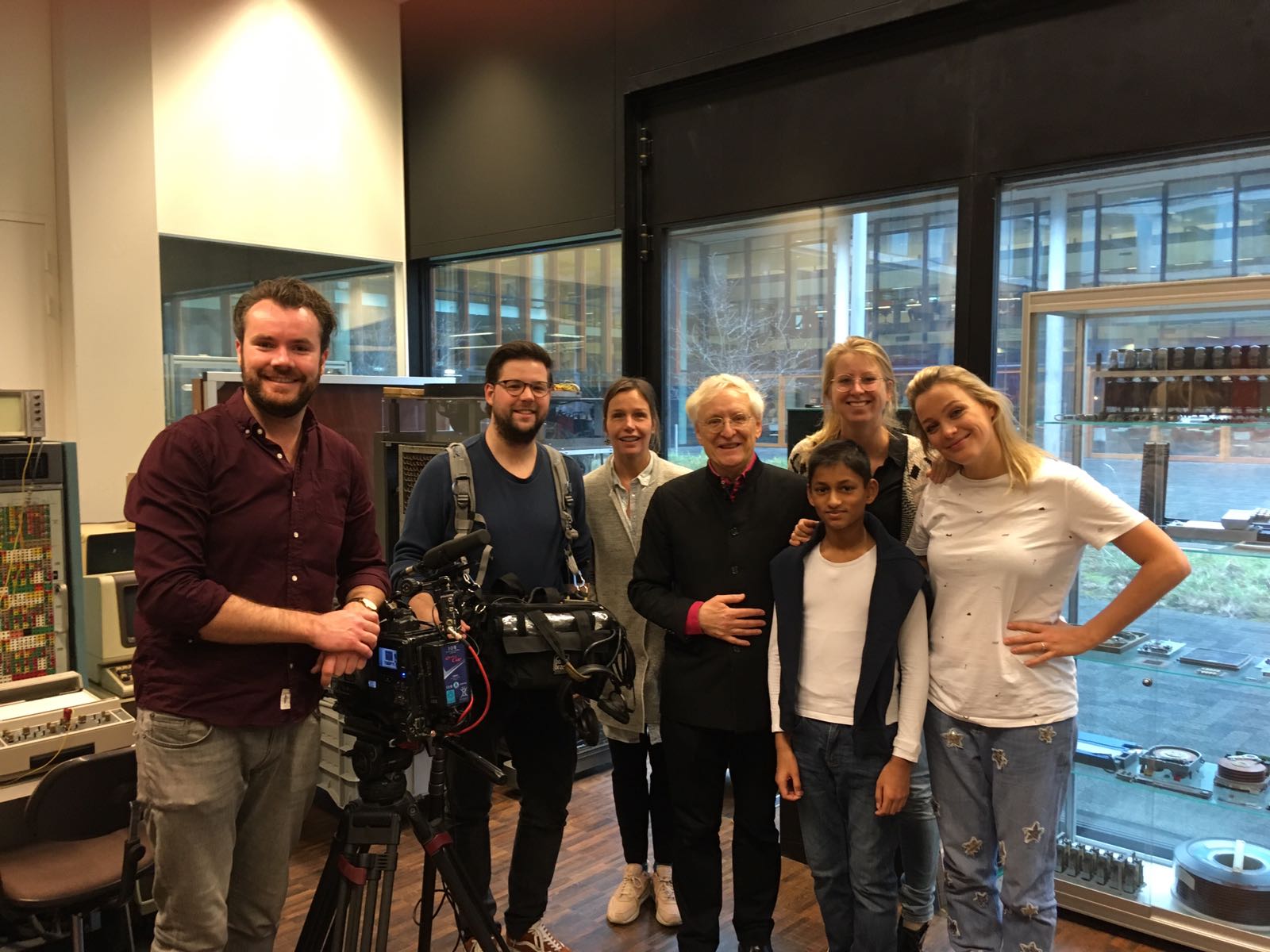
I will be on TV in the kids' program Willem Wever soon. When we were filming, I drew the above diagram for this boy, explaining that it's called a network because it looks like a fishing net. "Oh! Of course!" he replied. Unfortunately they weren't filming his face at that moment.
This is connecting to the Vatican; you can see the message hopping from Amsterdam, to Germany, Switzerland, and Italy.
1 cwi-csw.math.cwi.nl 2 cwi-br-out.cwi.nl 3 ae5.1027.jnr01.asd001a.surf.net 4 surfnet.mx1.ams.nl.geant.net 5 ae0.mx1.fra.de.geant.net 6 ae1.mx1.gen.ch.geant.net 7 ae4.mx1.mil2.it.geant.net 8 garr-gw.mx1.mil2.it.geant.net 9 rx2-mi2-rx2-rm2.rm2.garr.net 10 rx2-rm2-rx1-rm2.rm2.garr.net ...
We knew it was planned
17 November 1988
64kb/s
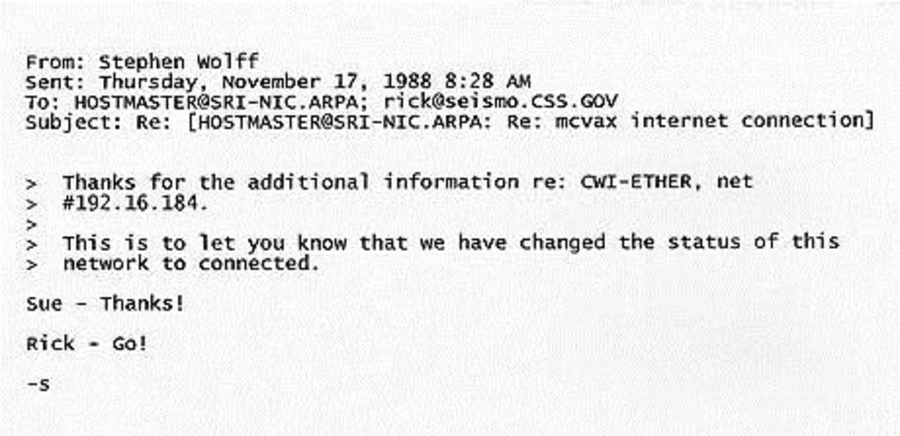
A year later: 128kb/s.
And yet since then speeds have effectively doubled per year.
By 1997, when AMSIX was created, it was running at 2Mb/s.
(This is of course less than you have at home now.)
These are values I could track down (usage, not capacity by the way, and only the measured usage at that)
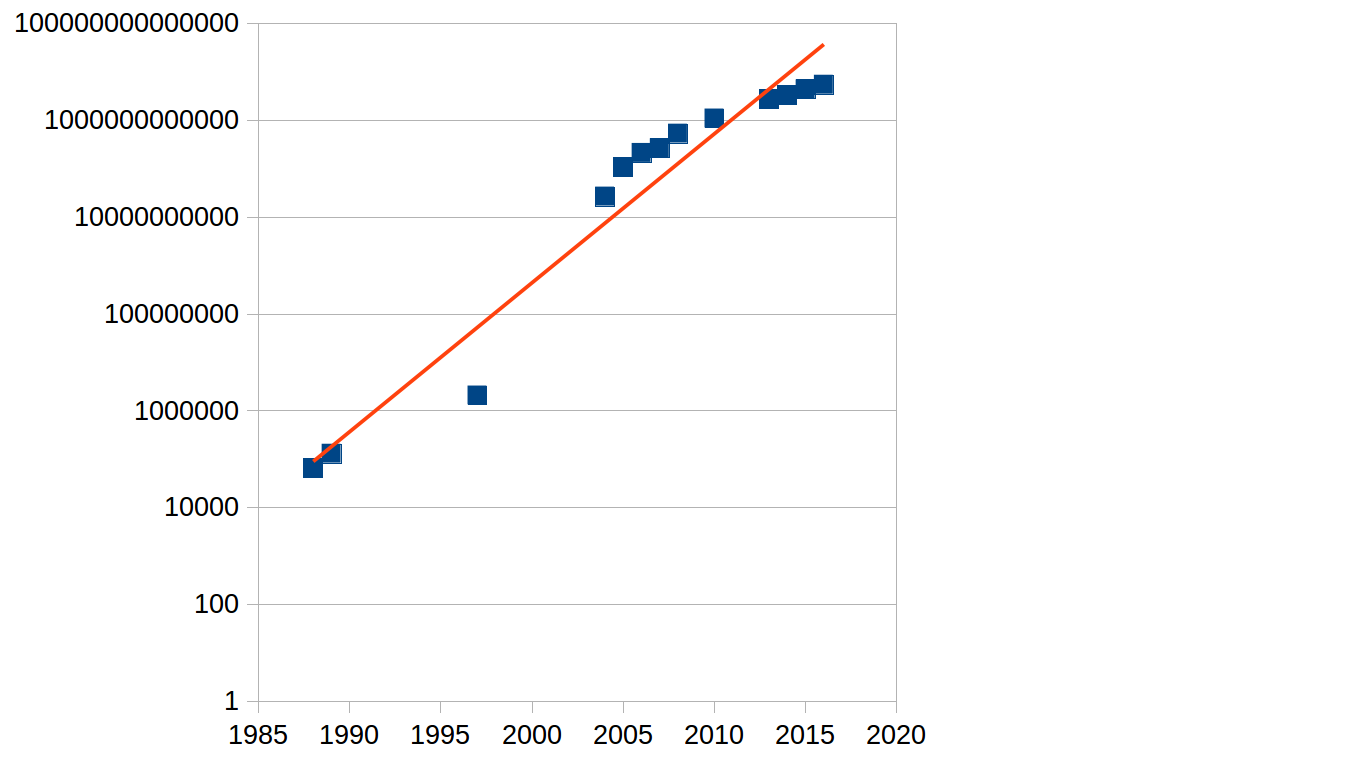
Currently peaking at 6Tb/s (Tera is a million million)
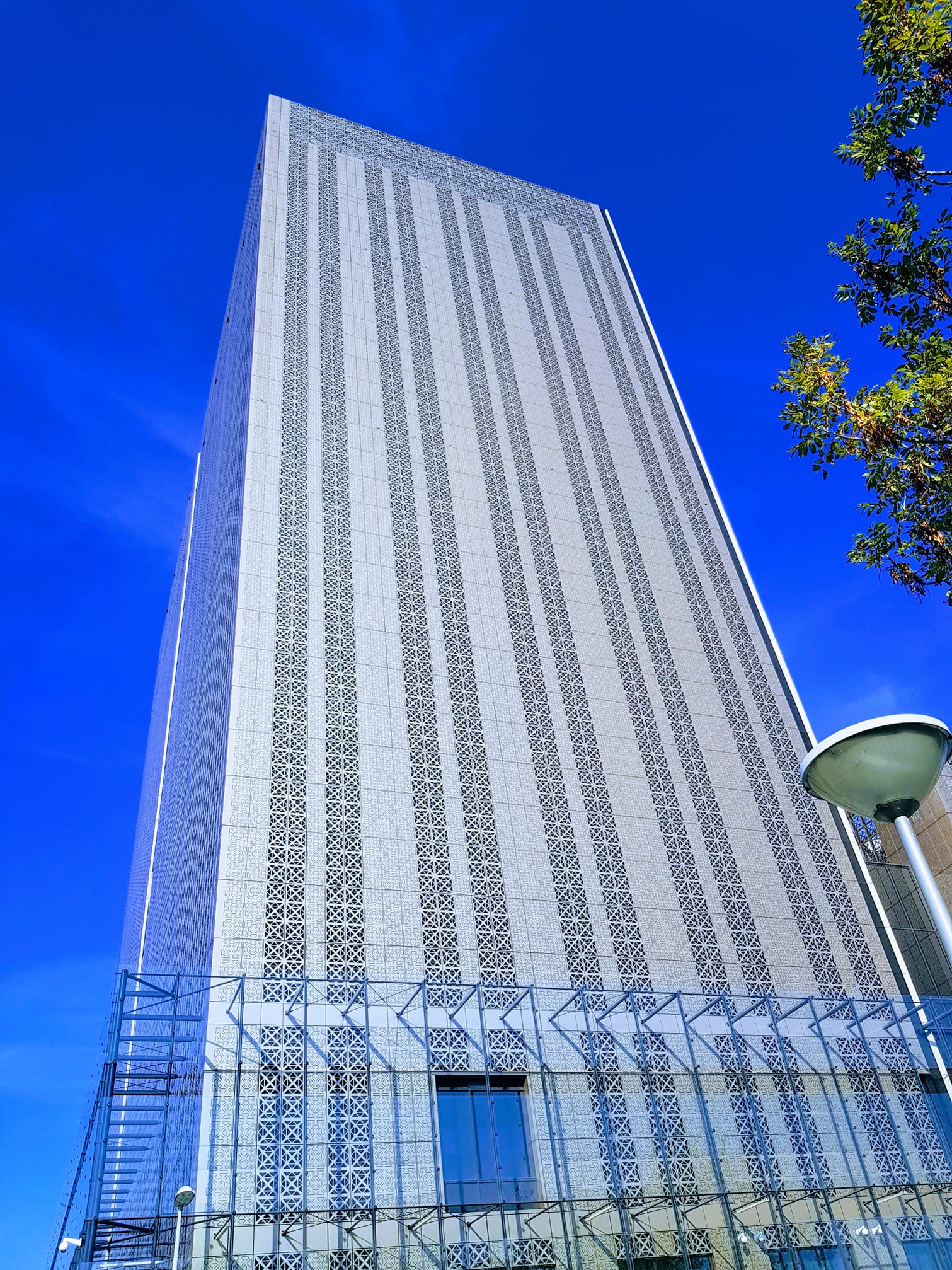
My home bandwidth has similarly been doubling over the years.
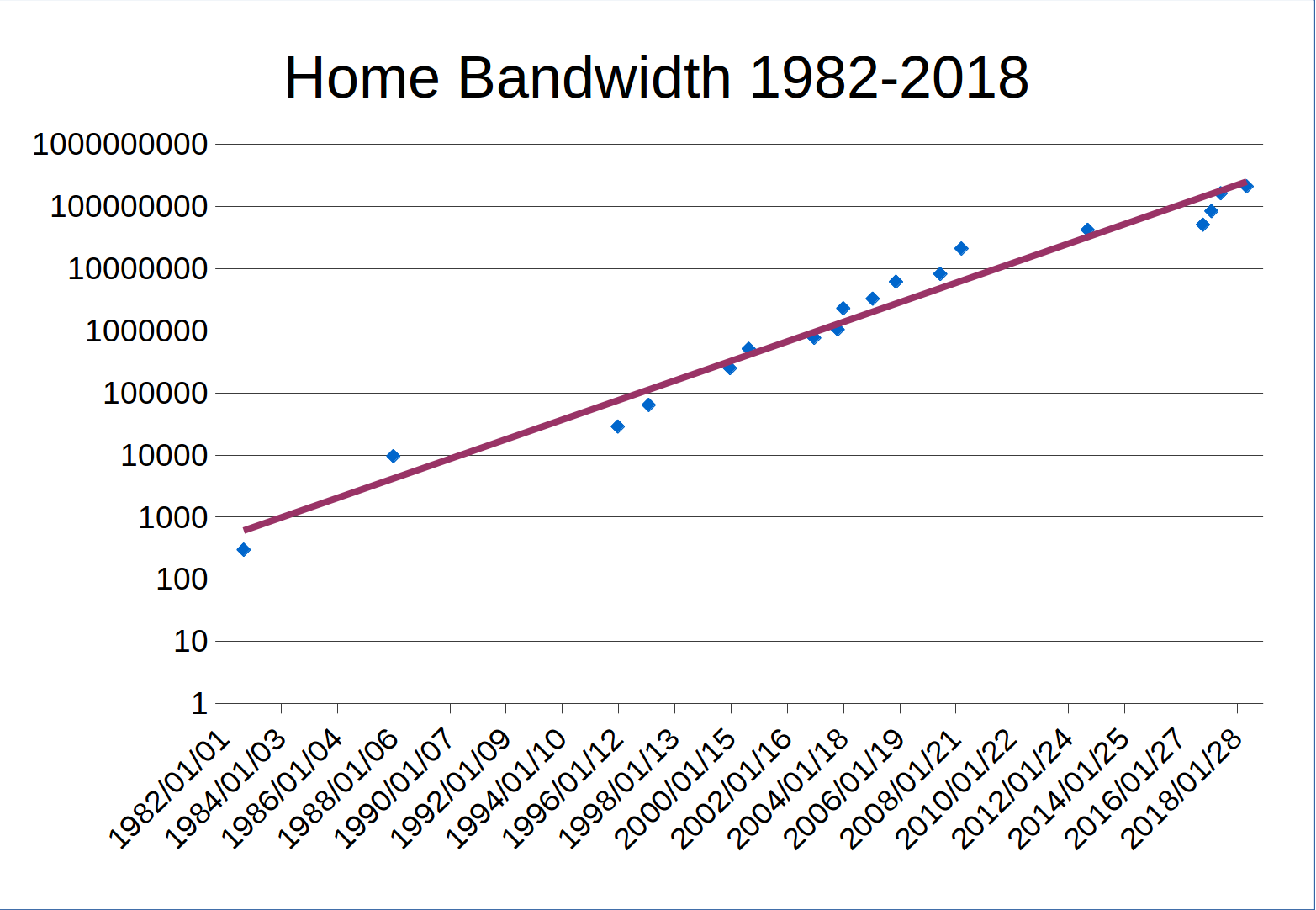
The first thing I did on that first day of internet was log in to a computer in New York. It cost no more than logging in to a computer in Amsterdam
Before 1988, phoning long-distance was expensive.
The further you phoned, the more expensive it was. This matched people's expectations, but didn't match reality.
In fact, the expensive part is the local loop: only one person (you) is using that. The long-distance part is amortised over 1000's of calls.
The internet made this all to clear.
Once the internet got fast enough (doubling per year), it started being possible to do voice calls over the internet.
There are now dozens of programs where you can voice call, and video call.
Essentially, phone calls have become better and free with the right infrastructure.
Luckily, the internet isn't owned by anyone, so the telephone companies have had to sit by and watch their golden goose be slaughtered, and have been unable to do anything about it... There's no one to sue!
(Mobile providers are still overcharging us for international calls though)

This was a DEC VAX, number 38 if I remember right.
At the time a very fast computer: 1500 dhrystones.
My current mobile phone is more than 100M dhrystones!
The open internet in Europe is 30 years old.
When it started, computing was only 30 years old itself.
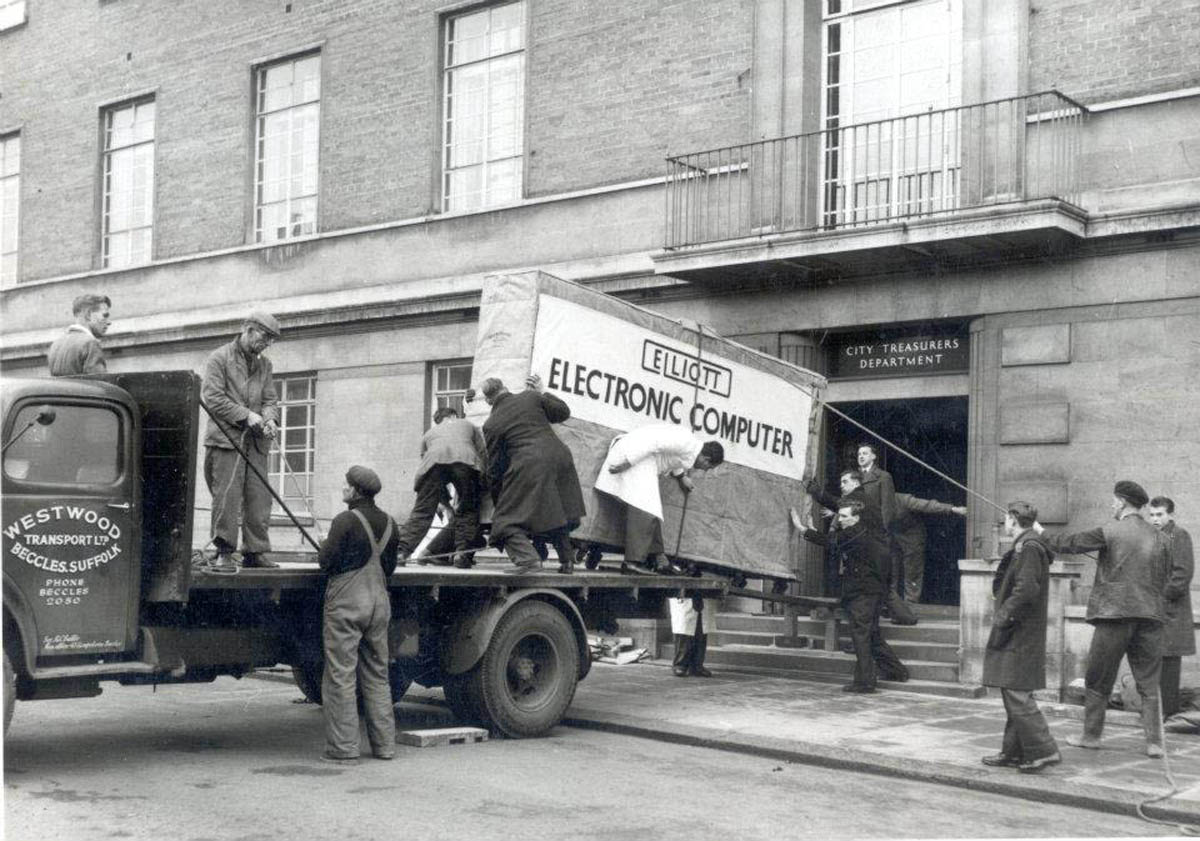
Norwich 1957
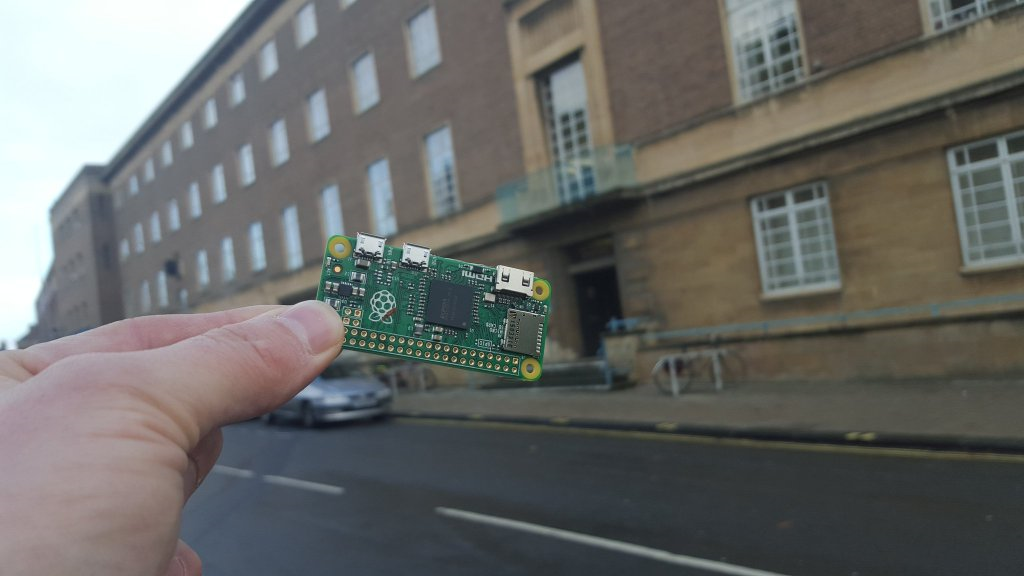
This computer was the first to be given away free with a magazine.
The 1957 computer ran non-stop for 10 years.
The Raspberry PI can do the same amount of computing in 5 minutes.
It is a million times faster, a million times cheaper, and two million times smaller...
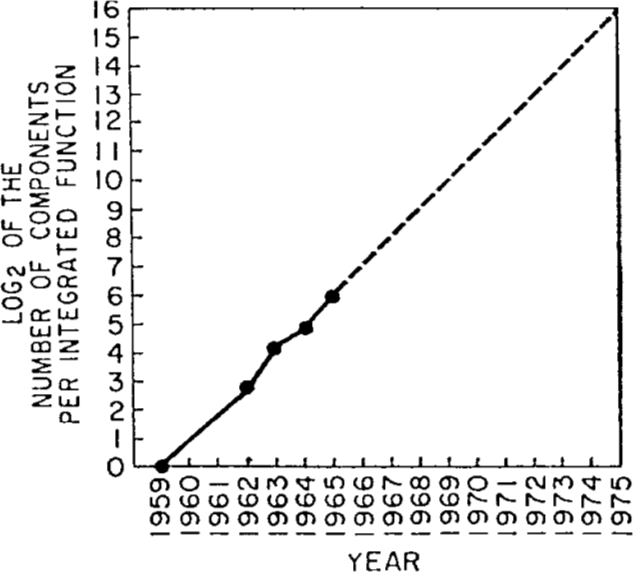
Moore's Law wasn't a prediction about how fast computers would get, but about how many transistors you would be able to get on a chip.

As you can see, Moore's Law isn't over yet.
The coming of the internet enabled the Web.
Tim Berners-Lee (and Robert Caillau) created the Web at CERN.
They brought together existing technologies (Hypertext, the internet, MIME types) and created a cohesive whole.
The Web is now replacing books and many other things.
Telephone directories, encyclopaedias, train timetables, other reference works are already gone. Others will follow.
Books (as an artefact) will become a niche market. All information will be internet-based.
Just as the internet showed us the true cost of communication, the web will show us the true cost of content.
To publish information in a book you need an expensive infrastructure: paper manufacture, printing presses, distribution channels, advertising, bookshops.
When you buy a book, the infrastructure consumes most of the price: typically the producer of the information (the author) gets 10%.
But with the internet, you no longer need that infrastructure; anyone can publish, even from home.
The book made everyone a reader.
The internet can make everyone a publisher.
Unfortunately, the first successful web browser, Mosaic, left out the publishing part, and only allowed you to read web pages.
And so we got "Web 2.0".
The term Web 2.0 was invented by a book publisher (O'Reilly) as a term to build a series of conferences around.
It conceptualises the idea of Web sites that gain value by their users adding data to them, such as Wikipedia, Facebook, Flickr, ...
By putting a lot of work into a website, you commit yourself to it, and lock yourself in to their data formats too.
This is similar to data lock-in with software: when you use a proprietary program you commit yourself and lock yourself in. Moving comes at great cost.
Similarly, there is no standard way of getting your data out of one Web 2.0 site to get it into another.
As an example, if you commit to a particular photo-sharing website, you upload thousands of photos, tagging extensively, and then a better site comes along. What do you do?
How do you decide which social networking site to join? Do you join several and repeat the work?
How about geneology sites? You choose one and spend months
creating your family tree. The site then spots similar people in your tree on
other trees, and suggests you get together. But suppose a really important tree
is on another site?
How about if your chosen site closes down: all your work is lost.
This happened with MP3.com for instance. And Stage6. And Pownce. And Ficlets. And Jaiku. And Orkut. And Google Video. And Google+.
How about if your account gets closed down?
There was someone whose Google account got hacked, and so the account got closed down. Four years of email lost, no calendar, no social network.
There was someone whose Facebook account got closed because he was trying to download all the email addresses of his friends into Outlook.
Or the woman whose account was closed for the crime of posting a photo of her breastfeeding.
Web 2.0 partitions the Web into a number of topical sub-Webs, and locks you in, thereby reducing the value of the network as a whole.
What should really happen is that you have a personal Website, with your photos, your family tree, your business details, and aggregators then turn this into added value by finding the links across the whole web.
All there needs is a way of identifying who is trying to look at your content, and we can replicate Facebook without anyone owning your data.
All those passwords!
Your computer knows it is you (you've used a password or whatever to get in).
Solution: Use public key cryptography at a low level to log you in.
Two matched keys: you can lock with either key, but if you lock with one, only the other can open it.
So everyone has two keys, one public and one private.
Identity: If I lock a message with my private key, it can only be opened with my public key, and so you know it was really from me. (No more spam!)
Privacy: If you send me a message locked with my public key, you know that only I can open it to read it.
Secure messaging: if I send you a message locked with my private key, and your public key, then only you can read it, and you know it's really from me.
You would still need to register with sites, but instead of picking a password, you exchange public keys (or rather your browser does).
Then when you click on "log in", the site says (to your browser): decrypt this random message for me.
You know it's really them asking, and when your browser decrypts the message, they know it's really you.
And you're in, without typing in a password.
Unfortunately, something like this was in the original design of the internet, but was too expensive to implement then. We are paying the price now for them not leaving hooks for this to happen.
Surely.
It is trivially easy to have a webserver at home: the connection speeds are now fast enough. Many home modems already support it.
There are already some examples, for instance Tim Berners-Lee's Solid.
Makes it sound like it's a different internet.
Really: Things on the internet.
Enabled by all those super-small, super-cheap processors.

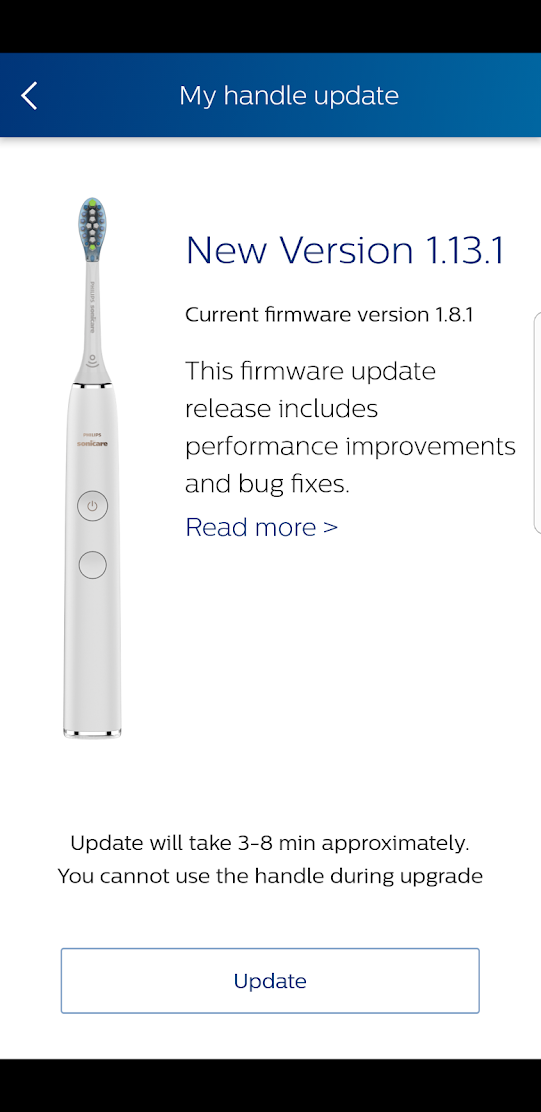
Not all IoT artefacts are stupid. These for instance allow you to control the temperature of rooms individually, and give each room its own schedule. It asks to turn off the heating when you leave.

One of the biggest dangers of IoT is exactly the same as with Web 2.0: they use their own servers.
If the company dies, your devices die with them.
Example: the Pebble watch.

Or Lowes that shut down its whole home IoT platform.
The current internet is still very immature.
When books were first introduced by Gutenberg, It took 50 years before the idea caught hold that books didn't need to imitate manuscripts.
We are still feeling our way in society in how to use and deal with the internet.
Interlinking of services.
All information freely available.
Internet everywhere, lights, oven, your alarm clock, everything connected.
All communication via internet.
Everyone a publisher.
Nothing unavailable, nothing ever going 'out of print'.
A lot of existing information is distributed by people who have concentrations of the means of distribution, and that is the reason they exist.
Music industry is healthy, record industry is not.
Old media is struggling to retain ownership.
We are at a turning point in history. The internet is going to have as great an effect on society as the book did, only much quicker.
We are in a turbulent period now because we are, historically seen, in the midst of a paradigm shift.
"We tend to overestimate the effect of a technology in the short run and underestimate the effect in the long run." Roy Amara, The Institute for the Future